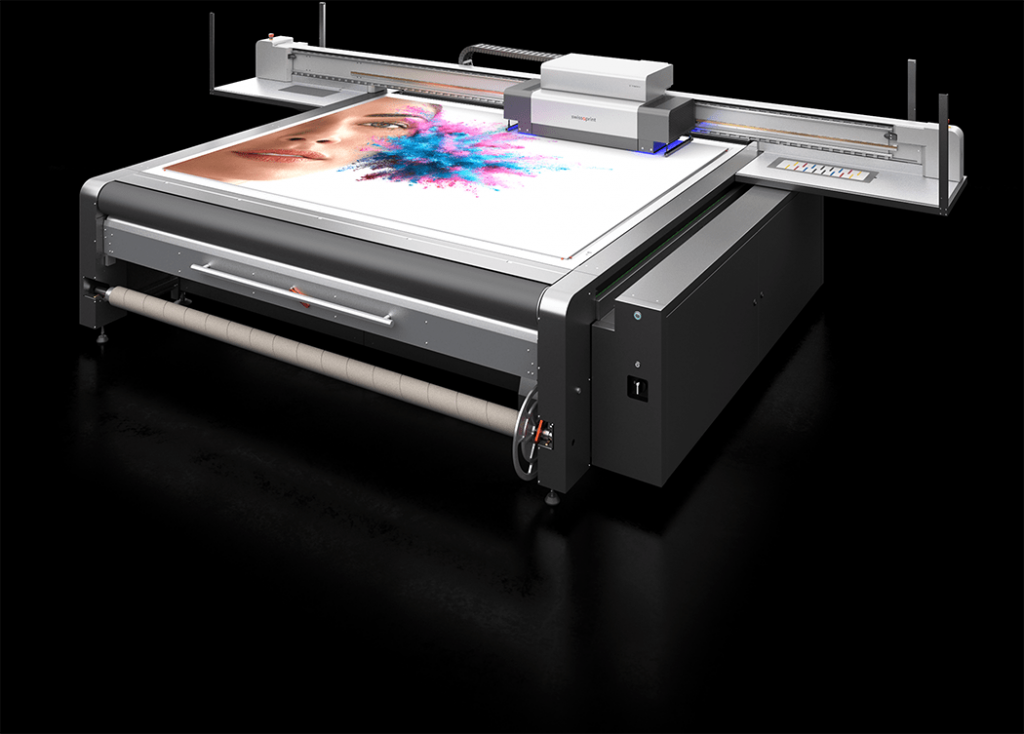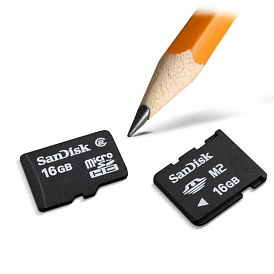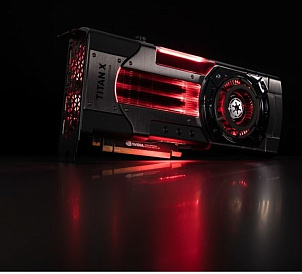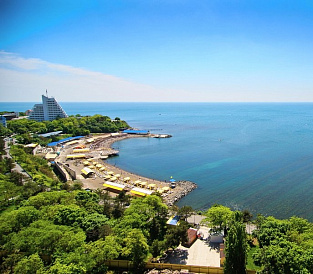Compare laser and LED printer - which is better
Buying a printer is a crucial matter: a technique, if everything is fine with it, can serve for many years, so it’s better if it suits the tasks that a particular user sets for it.
To make an informed choice, you need to know the pros and cons of different technologies, as well as the nuances that are worth paying attention to.
Principles of operation of printers of different designs
Different devices work on a different system.
The simplest of modern designs - jet. They have special tiny holes, nozzles. The paint, which is contained in the reservoir, in the printer head, passes through the nozzles and leaves a mark on the sheet — a lot of small droplets, each of which is no larger than a human hair. Moreover, the paint is distributed additionally, according to one of two technologies:
-
Piezoelectric. Next to each nozzle there is a crystal to which electric current is applied. Depending on the strength of the current, the crystal bends to one side, compressing the reservoir, or, conversely, allowing it to flatten. Under the pressure of the point of paint obtained different shapes.
-
Thermal. Next to each nozzle there is not a crystal, but a heating element that heats up to 100 ° in less than a second. Under the influence of high temperature ink falls on the paper. The only negative - the heating element has the ability to quickly fail.
-
Inkjet devices they work slowly, give not the best image, quickly overheat, and their cartridges tend to dry out. This is a good option for home, for a person who occasionally prints black and white documents.
In all other cases, the laser system is preferred. It works according to a completely different scheme:
-
A sheet is inserted into a special groove, the mechanism pulls it inward.
-
Inside the image obtained from the computer is processed and a complex system of mirrors and lasers acts on the photosensitive drum - the main element of the printer. As a result, the affected areas receive a charge opposite to the standard drum charge.
-
The mechanism is moving. The magnetic shaft measures the right amount of toner, it sticks to the charged parts of the drum, leaving the rest empty.
-
The leaf begins to move. The drum passes through it, the tonic sticks to the surface of the paper.
-
The leaf moves further, it is briefly affected by high temperature and pressure - it takes no more than a couple of seconds. As a result, the tonic is fixed.
-
The black and white image at this moment goes to the tray - it is ready. Color rolls a few more times, until the tonics of all primary colors are attached to the sheet.
Recently, progress has gone further: where a traditional laser printer has only one diode emitting a laser beam, there are several LED devices. The technology itself does not fundamentally change from this, but it has specific advantages that the conventional laser printer lacks.
Advantages of the LED printer

Usually, talking about the advantages of LED printers, talking about the following points:
-
about compactness and lack of moving parts;
-
about the absence of ozone;
-
about high accuracy and speed;
-
about information security.
Each of them should be considered in more detail.
Compact and no moving parts
The light source in an LED printer is several thousand individual LEDs that are mounted into a textolite plate in the same way that most electronic components of modern technology are mounted. The plate itself is sealed in metal, which prevents possible damage.
Diodes are very small in size, so they fit perfectly on the print head, which is so small that LED printers are considered the most compact of all existing ones.
In a laser printer, the system is much more complex and voluminous. It includes mirrors and a rotating multifaceted prism, which refracts the laser beam. It is quite natural that a technique in which more moving parts fails much faster.
And some LED printers are given a lifetime warranty. Or not on the devices themselves, but at least on the print head.
Does not emit ozone
Ozone is useful for humans in small quantities, but in a high concentration this gas is poisonous for humans, moreover, from potent ones. The man in the street has heard of him, as a rule, in connection with the expression “ozone hole” - it is believed that because of its emissions, the Earth’s atmosphere suffers, becoming less dense, suitable for breathing.
One of the sources of ozone in everyday life is like printers, that is, copying equipment. Previously, each of them had a coronator - a thin wire through which an electric current passed. As soon as it came into contact with air, the oxygen around it was ionized and ozone was obtained.
Against the background of the universal struggle for ecology, the coronator was abandoned, replacing it with a rotating roller. The result was a cessation of ozone production.
However, in laser printers there is another source - the beam itself. If you look at the printing scheme, it becomes clear that it passes through a complex system of mirrors and lenses before it gets to the surface of the drum. Oxygen, which comes into contact with it, is ionized and ozone is produced.
Of course, the coronator produced gas in large quantities, but a person is able to feel a characteristic odor next to the laser printer.
LED devices lack such a disadvantage. The distance from the diodes to the drum is small, the air that could be ionized, the beam almost never meets. Yes, and its characteristics are different from the standard.
Technically, LED printers are devices that help sustain the environment.
High image accuracy
When a laser printer is working, it forms each line when the beam hits the surface of the drum. The lens that guides it rotates with a stepper motor. At each step, it turns at the same angle, but the beam at the same time passes a different distance, reaching different areas on the surface.
Therefore, the distance between the points is different, and its shape is close to oval rather than round, since the beam falls at an angle.
With an LED printer, everything is different: there is a diode above each point of the drum. The distances between the diodes are the same, the shape of the point, respectively, remains round along its entire surface, which is in the middle of the sheet and along the edges.
That is why professional sadness, which requires great precision, is almost always done using an LED printer. But for ordinary, everyday tasks, the laser is enough - the difference between the results can be seen only at high magnification, but not when viewed with the naked eye.
Information Security
For everyday use by the philistines, it does not matter, but still curious as a fact: the laser diode, when used as a source of light, emits a sequence of pulses that can not only be seen but also caught at a radio frequency.
Every point that appears on paper corresponds to a pulse in the radio. If someone wants to get an image that prints a printer, they can receive impulses on the antenna, decrypt them using a computer and use them for printing.
Diodes also produce radiation that can be caught by the antenna, but. They are not one, not two, but several thousand and they light up simultaneously. As a result, the air fills the "white noise", which is impossible to decipher: no technique will determine which diode caught fire and which does not, and where, respectively, is the point.
Therefore, in places where they work with secret information or with customer database data, LED printers are used rather than laser ones.
High speed
All diodes in the line are placed in a row and glow at the same time, because the printing speed of LED printers is very high.
But laser printers, on the contrary, prescribe each line of the image sequentially and therefore cannot physically cope with the number of lines more than a certain limit.
At a resolution of 1200, the laser printer will print no more than 20 pages per minute, otherwise distortion will begin - typos, lines will float, or you will have to reduce the expansion. If it is 600, the speed will increase to 50 pages per minute, but the quality will noticeably suffer.
That is why large production, where speed is claimed, usually turn to LED printers.
Advantages of a conventional laser printer

Against this background, a conventional laser printer begins to seem somewhat outdated and not even in high demand. However, if you break away from the comparison, it will become clear that it has its advantages:
-
Do not need frequent refill cartridges. This is a constant scourge of inkjet printers - the ink in them runs out quickly, and not every user can learn to fill them. With a tonic easier: it does not dry over time and is spent much more economically.
-
Not afraid of increased loads. There are no elements that could overheat, there are no elements that could dry. Easily cope with loads that an inkjet device would reliably disable.
-
It has good print quality.. Yes, the dots on paper are rather oval-shaped, but this is not visible with the naked eye, especially if you print documents, and not pictures or photos.
-
Prints on any paper, regardless of its quality. While inkjet counterparts are too thin or poor quality paper tend to rip.
-
Easy setup. Even a person who is not too familiar to work with modern technology can cope with it.
By itself, a laser printer is a great thing, which is quite suitable for domestic work.
Comparison of disadvantages
In fact, all the advantages of the LED printer manifest themselves only in specific situations - for example, when working in large production or when trying to print photos with excellent resolution very quickly.
But the disadvantages when working at home are quite noticeable - and differ from the disadvantages of a laser printer.
For the LED version of the following disadvantages:
-
High price. This is perhaps the main problem faced by users. To buy a tonic can, it will take about 1,000 rubles - and the color will be much more expensive. Yes, and the device itself will not cost less than 10 000 rubles - a significant expenditure, if you plan to put at home and print documents.
-
The complexity of the repair. To repair the LED printer, if it fails, you will need the help of a master - necessarily. And in order to replace the tonic - too. At the same time, spare parts and a specialist who can work with them can not be found everywhere.
-
Specificity. LED printer is a good solution for the office, for a large enterprise, for the studio of the photographer, who needs high resolution. For the house such power is usually simply not required.
Laser printer problems are similar, but still different:
-
Price. Tonic costs a little less, and the printer will cost more than 5,000 rubles. You can buy it from your hands - this will reduce costs, but add risks.
-
Vulnerability. Since the main component in a laser printer is moving, there is always the danger that it will fail. And this danger is greater than with the LED counterpart.
-
The complexity of the service. Exactly the same as with LED - you need a master to change the tonic and, especially, to repair. Unless to find it will be easier, even in a small city.
-
Ecological. This is a matter of principle rather for people who seek to harm the planet to a minimum. Of course, when working laser printer emits less ozone than inkjet or matrix, but still there is some percentage.
-
Specific drawbacks - lower accuracy, lower printing speed, lack of security of information - do not work when it comes to home use. For most people, the power that the laser option can provide is quite enough.
The nuances of choice
When buying a printer, there are several important criteria to be guided by:
-
Print speed. If you plan to print several pages of documents, a laser printer is perfect - and even an inkjet can do it. But if you plan to print regularly and in large quantities (for example, print books) and quickly, you will need something more serious.
-
Print quality. For documents suitable laser printer - even inkjet. But if you plan to print large photos or whole pictures, you cannot do without a good resolution and, accordingly, high-quality technology.
-
Warranty and reliability. LED printers can last a decade, laser ones usually fail faster. If you plan to use the same device for many years, and intensively and every day, it is better to let it belong to the first.
-
Complexity of service. In large cities, you can afford to have a LED printer - for it there will be details and wizards. But in the areas you should be a practical person and choose something that the district can accurately repair.
-
Cost of consumables. In the laser version they are cheaper, albeit only slightly.
When choosing a particular printer, you need to take care to:
-
he had good reviews on sites, and from real people, and not from bots or paid professionals;
-
he had a guarantee and documents from the manufacturer - otherwise, if he breaks, he will have to be repaired by the master, and this is expensive, plus it will not be possible to change the defective goods;
-
its trademark was well-known and popular - it is a good guarantee of quality, plus a higher chance that there will be a service center nearby, whose services can be used.
The answer to the question "which printer is better" does not exist in isolation from the specific situation. For a large office that works with a client base, or a huge enterprise that constantly prints something — invoices, orders, statements — a LED printer is better suited. For a small office or a small business, a laser. But for the house you need to choose according to your needs: and as a result it may turn out that not even an LED or laser laser is best for them, but a regular cheap inkjet printer, which is cheap and cannot boast excellent picture quality.
Individual approach is the key to success.













